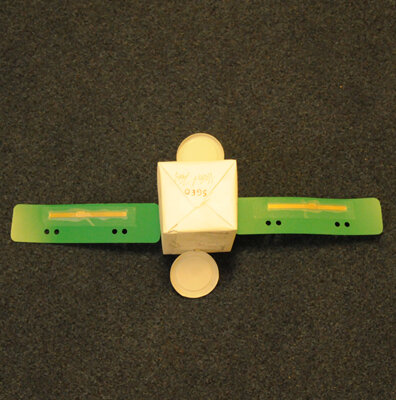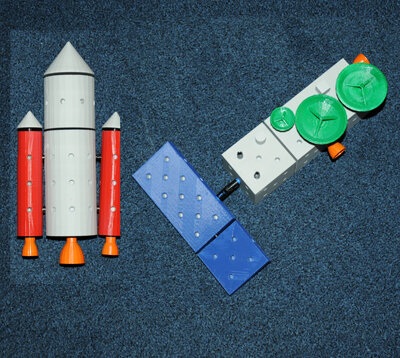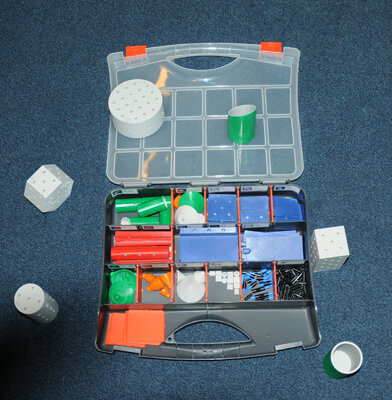Modelling “Space Blocks” now available in the CDF
It has long been recognised that a picture is worth “a thousand words”, but it is our experience that a 3D model is worth “a thousand pictures”. This is particularly true during conceptual design studies in the CDF where it is sometimes difficult to impart ideas relating to spacecraft orientation with regards to its solar array or its antenna pointing requirements. In fact models have been used for many years to evaluate the efficacy of designs on issues such as satellite accommodation, comparison of configuration options or even lander release sequences.
The problem has always been a compromise between the availability of models in real-time and their quality. For several years models would be made by team members out of old cans, pieces of card, etc. but it was always recognised that this had several drawbacks; such as the inability to change with the design, the flimsy nature of the models and not being representative of the tools and equipment available in the CDF. Even when the CDF had access to a rapid prototype machine, it was found that this process was relatively slow and unable to keep up with the rapidly changing design during the early sessions of a CDF study.

The solution has been found, with the CDF developing a set of building blocks, incorporating all the major components of most satellites and launchers. Using a simple universal joining piece, this allows teams to not only produce a rough representation of their design, but allows for the rapid re-design to try-out various combinations of equipments such as engines, solar arrays, radiators, etc.

In order to determine which building blocks were needed, an analysis of more than 100 configurations designed in the CDF was performed to define a set of components that spanned the vast majority of spacecraft studied. The blocks were then scaled to facilitate different satellite shapes and manufactured using the rapid prototyping machine. The blocks are made from ABS (Acrylonitrile Butadiene Styrene, a type of plastic) and are hence light and resistant. Their sizes range from 1 to 10 cm and the first toolbox includes 30 types of blocks with approximately 100 pieces.
Due to the ease of use and compactness of the modelling set, the blocks have proved to be very popular, not only being used in CDF studies but also by project teams carrying out reviews and by systems engineering courses.















 Germany
Germany
 Austria
Austria
 Belgium
Belgium
 Denmark
Denmark
 Spain
Spain
 Estonia
Estonia
 Finland
Finland
 France
France
 Greece
Greece
 Hungary
Hungary
 Ireland
Ireland
 Italy
Italy
 Luxembourg
Luxembourg
 Norway
Norway
 The Netherlands
The Netherlands
 Poland
Poland
 Portugal
Portugal
 Czechia
Czechia
 Romania
Romania
 United Kingdom
United Kingdom
 Slovenia
Slovenia
 Sweden
Sweden
 Switzerland
Switzerland



























